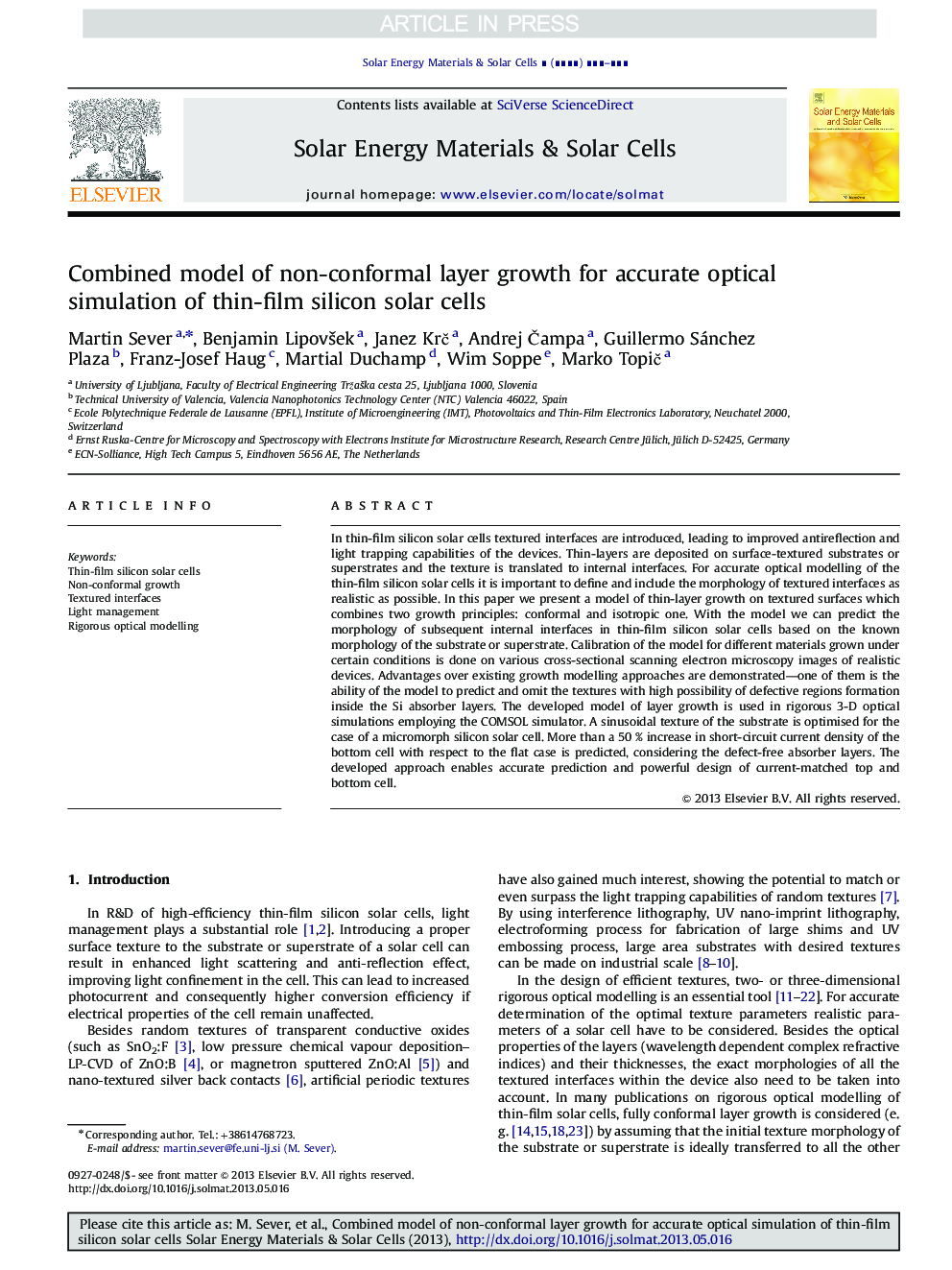| Article ID | Journal | Published Year | Pages | File Type |
|---|---|---|---|---|
| 6535912 | Solar Energy Materials and Solar Cells | 2013 | 8 Pages |
Abstract
In thin-film silicon solar cells textured interfaces are introduced, leading to improved antireflection and light trapping capabilities of the devices. Thin-layers are deposited on surface-textured substrates or superstrates and the texture is translated to internal interfaces. For accurate optical modelling of the thin-film silicon solar cells it is important to define and include the morphology of textured interfaces as realistic as possible. In this paper we present a model of thin-layer growth on textured surfaces which combines two growth principles: conformal and isotropic one. With the model we can predict the morphology of subsequent internal interfaces in thin-film silicon solar cells based on the known morphology of the substrate or superstrate. Calibration of the model for different materials grown under certain conditions is done on various cross-sectional scanning electron microscopy images of realistic devices. Advantages over existing growth modelling approaches are demonstrated-one of them is the ability of the model to predict and omit the textures with high possibility of defective regions formation inside the Si absorber layers. The developed model of layer growth is used in rigorous 3-D optical simulations employing the COMSOL simulator. A sinusoidal texture of the substrate is optimised for the case of a micromorph silicon solar cell. More than a 50 % increase in short-circuit current density of the bottom cell with respect to the flat case is predicted, considering the defect-free absorber layers. The developed approach enables accurate prediction and powerful design of current-matched top and bottom cell.
Related Topics
Physical Sciences and Engineering
Chemical Engineering
Catalysis
Authors
Martin Sever, Benjamin LipovÅ¡ek, Janez KrÄ, Andrej Äampa, Guillermo Sánchez Plaza, Franz-Josef Haug, Martial Duchamp, Wim Soppe, Marko TopiÄ,
